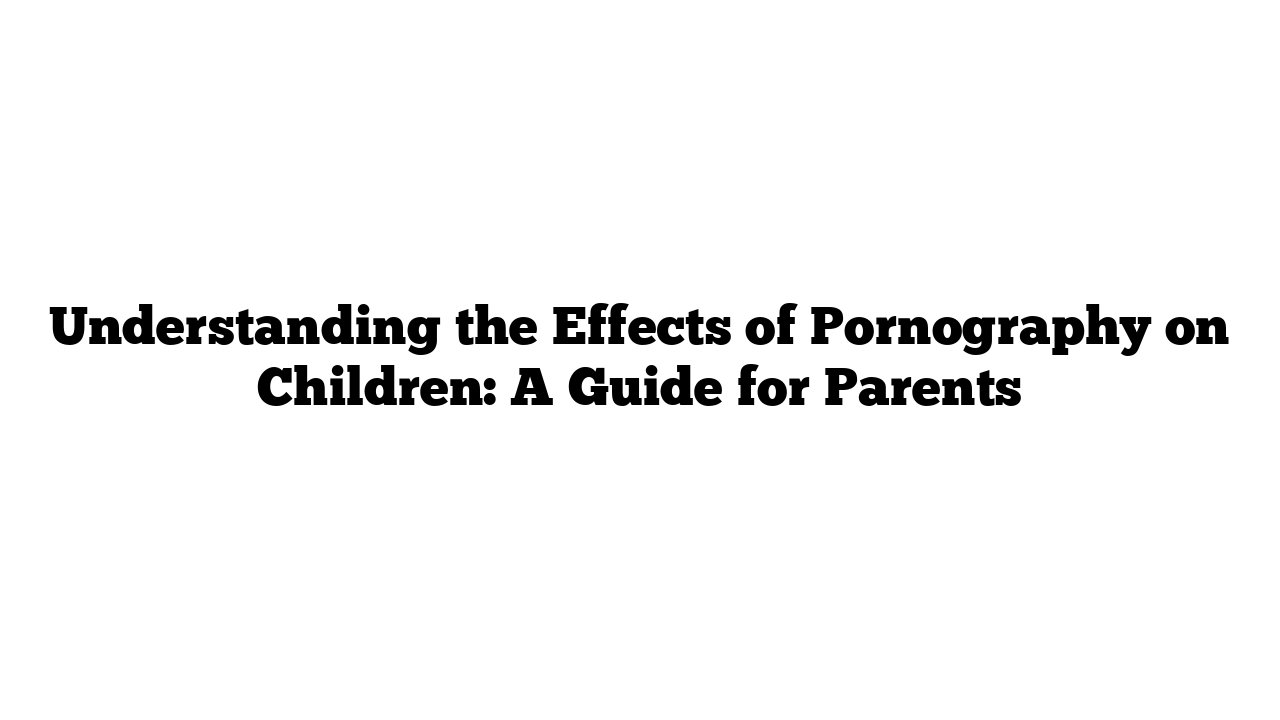Did you know that children as young as 10 years old are watching pornography? This is a concern that parents need to address. Explained by a urologist and pelvic surgeon. In this article, we’ll explore how pornography affects young minds and discuss effective ways to talk to your children about it.
The Impact of Pornography on Developing Brains
1. The Immature Prefrontal Cortex
The prefrontal cortex is crucial for making decisions, setting goals, and planning. During adolescence, this area is still developing. As a result, children may struggle to understand that watching pornography can be harmful to their well-being.
2. Neuroplasticity
Children possess neuroplasticity, which means their brains change based on experiences. When exposed to pornography, their brains may form circuits that favor this behavior, leading to potential addiction.
3. Dopamine Release
Watching pornography triggers the release of dopamine, a chemical associated with pleasure. This can create a cycle where children crave more pornography to achieve the same level of satisfaction. Adolescents are particularly susceptible because their dopamine systems are already in overdrive.
4. Hormonal Effects
Pornography activates the hypothalamic-pituitary axis, leading to the release of hormones like testosterone and cortisol. Increased levels of these hormones can result in heightened emotional responses, making it harder for children to control their feelings and actions.
5. Body Image Issues
Exposure to pornography can distort children’s perceptions of their bodies. They may compare themselves to actors who often have unrealistic body types, leading to insecurities and unhealthy body images.
Research Insights
While it’s challenging to study the effects of pornography directly on children, we can look at studies involving young adults. For example, a study conducted in Belgium and Denmark surveyed 3,500 young men aged 18 to 35. They found that a significant number of participants watched pornography for up to 70 minutes per week. Interestingly, many reported feeling less satisfied with sex with their partners compared to viewing pornography.
How to Talk to Your Children About Pornography
Start Open Conversations
Pornography is everywhere, and your child may be exposed to it, whether you know it or not. Start by choosing a calm moment for discussion. A car ride or a quiet evening at home can be ideal.
Use Open-Ended Questions
Instead of asking, “Do you watch pornography?” try, “What do you think about it?” This approach encourages honest dialogue without putting your child on the defensive.
Normalize Feelings of Arousal
It’s essential to explain that feelings of arousal are natural. Some children may feel confused or distressed by these feelings. Help them understand that arousal is a normal response.
Differentiate Between Pornography and Reality
Discuss the difference between real sex and pornography. Explain that pornography is produced entertainment with professionals, special effects, and lighting. Emphasize the importance of privacy and consent in real relationships.
Discuss Bodily Autonomy and Consent
Make it clear that they should never touch anyone without consent, nor should they allow anyone to touch them without consent. This is a critical lesson in respect and boundaries.
Talk About Safe Sex
Ensure that your child understands the principles of safe sex. School discussions may not cover everything they need to know.
Ongoing Conversations
This topic isn’t a one-time conversation. Expect to revisit it over days, weeks, or months. This approach helps children process the information without feeling overwhelmed.
Final Thoughts
Addressing the topic of pornography with your children can be daunting. However, open and honest communication can help them navigate these complex issues. Remember, it’s essential to be patient and understanding.
Take care of yourself and your loved ones; you are worth it!
For more resources on this topic, consider visiting reputable sites like The American Academy of Pediatrics or Common Sense Media.
If you’re looking for more articles on health and well-being, visit medicaltimes.io.
